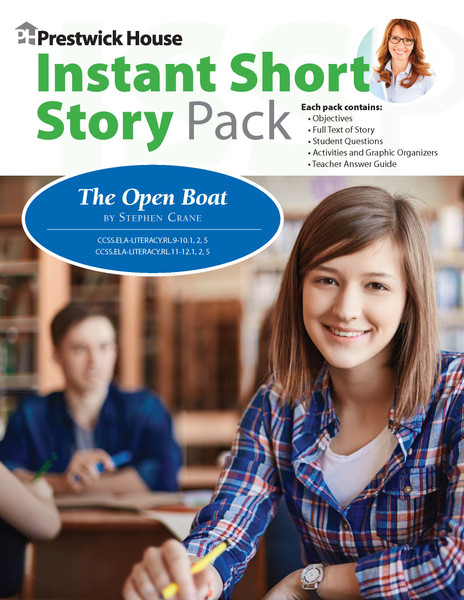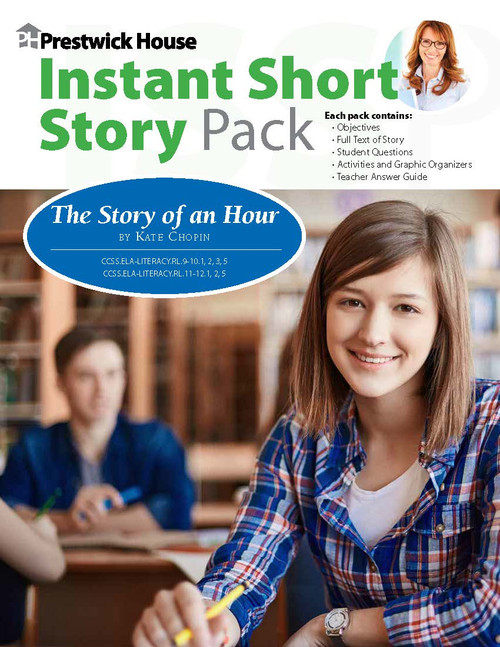Product Overview
Instant Resources for The Open Boat by Stephen Crane!
Whether you're looking for a short story to pair with the novel you're teaching, or you need a 2- to 3-day sub plan to use with the stories in your textbooks, Prestwick House Instant Short Story Packs go beyond basic comprehension to help students learn how to analyze literature.
Each downloadable pack addresses key skills through 5-10 standards-based analysis questions by guiding students through a series of scaffolding graphic organizers and in-class activities.
This Instant Short Story Pack for The Open Boat by Stephen Crane includes:
- Scaffolding graphic organizers and in-class activities
- Standards-based objectives
- Introduction and pre-reading notes
- Complete short story text
- Rigorous analysis questions
- Detailed teacher's answer guide
About The Open Boat
Along with The Red Badge of Courage, Maggie, a Girl of the Streets, and “The Blue Hotel,” “The Open Boat” is one of Stephen Crane’s most famous works. As is usually the case with Crane’s stories, the surface simplicity of the plot and characters entices many readers to oversimplify their reading of the story.
In 1896, the Bacheller Syndicate, a company that provided specialized articles to various newspapers for them to print, sent Crane to Cuba to cover the tensions surrounding what would eventually erupt into the Spanish-American War. He left Jacksonville, Florida, on the SS Commodore on December 31, 1896. The Commodore ran aground twice and developed several leaks. The lifeboats were lowered in the early morning of January 2, 1897, and the Commodore sank by 7:00 a.m. Crane survived a day and a half in one of the last lifeboats boarded. With him in the dinghy were three other men, one of whom was the ship’s captain. The ordeal is the basis of “The Open Boat,” which is almost a completely factual account of the incident.
Because the incident is based on autobiographical facts, many readers are lulled into missing the story’s narrative structure, character types, and themes. Crane wrote “The Open Boat” immediately upon returning to New York from the Commodore ordeal. He sold the story to Scribner’s for $300. It is one of the most clearly Naturalist of Crane’s stories, illustrating that Nature is indifferent to an individual’s struggle: A person who “deserves” to survive is just as likely not to, and one who does not deserve to live can easily survive. The universe, as Crane sees it, views each one’s life as equally invalid. This story also explores the psychology of the innocent bystander. The people on the shore no longer seem foolish and cruel once the reader realizes they have no way of knowing the men in the boat are in trouble.
As you read “The Open Boat,” look at Crane’s characteristic use of color and other sensory details to create vivid images in the minds of his readers. Then, contrast the realism of his descriptions with his failure to identify his characters by any means beyond their most superficial labels, the Cook, the Oiler, the Captain, the Correspondent. Consider what effect Crane is trying to create—what ideas he might be exploring—by putting these Everymen into such a specific setting and situation.












